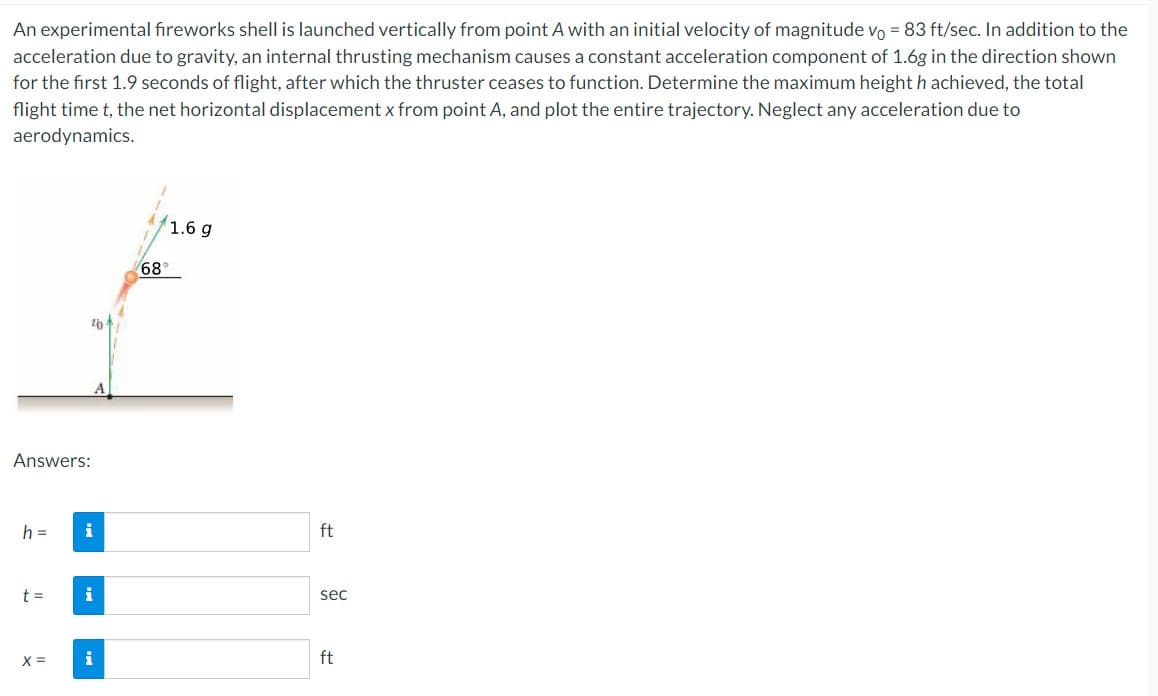An experimental fireworks shell is launched vertically from point A with an initial velocity of magnitude vo = 83 ft/sec. In addition to the acceleration due to gravity, an internal thrusting mechanism causes a constant acceleration component of 1.6g in the direction shown for the first 1.9 seconds of flight, after which the thruster ceases to function. Determine the maximum height h achieved, the total flight time t, the net horizontal displacement x from point A, and plot the entire trajectory. Neglect any acceleration due to aerodynamics. Answers: h = t = 20 X = i i i 68 1.6 g ft sec ft
An experimental fireworks shell is launched vertically from point A with an initial velocity of magnitude vo = 83 ft/sec. In addition to the acceleration due to gravity, an internal thrusting mechanism causes a constant acceleration component of 1.6g in the direction shown for the first 1.9 seconds of flight, after which the thruster ceases to function. Determine the maximum height h achieved, the total flight time t, the net horizontal displacement x from point A, and plot the entire trajectory. Neglect any acceleration due to aerodynamics. Answers: h = t = 20 X = i i i 68 1.6 g ft sec ft
Related questions
Question
box the final answer

Transcribed Image Text:An experimental fireworks shell is launched vertically from point A with an initial velocity of magnitude vo = 83 ft/sec. In addition to the
acceleration due to gravity, an internal thrusting mechanism causes a constant acceleration component of 1.6g in the direction shown
for the first 1.9 seconds of flight, after which the thruster ceases to function. Determine the maximum height h achieved, the total
flight time t, the net horizontal displacement x from point A, and plot the entire trajectory. Neglect any acceleration due to
aerodynamics.
Answers:
h =
t =
20
X =
i
i
i
68
1.6 g
ft
sec
ft
Expert Solution
This question has been solved!
Explore an expertly crafted, step-by-step solution for a thorough understanding of key concepts.
Step by step
Solved in 4 steps with 4 images
